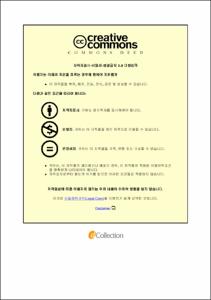Clostridioides difficile 에 의한 장외 감염의 임상적 특징과 치료 결과에 관한 연구
- Abstract
- Background: Whereas Clostridioides difficile enterocolitis has been well studied, data regarding extraintestinal C. difficile infection (ECDI) remain scarce and anecdotal. I investigated characteristics and prognostic factors in patients with ECDI at a large university hospital over a recent 21-year period.
Methods: I conducted a retrospective cohort study of patients at a 2,700-bed tertiary care hospital from January 1997 through December 2018 whose extraintestinal clinical specimen revealed C. difficile. Gastrointestinal (GI) disruption was defined as compromised integrity of the GI tract by abdominal surgery, perforation, malignancy, enterocolitis, or bleeding. Patients were divided into 3 groups: group A (GI disruption caused by malignancy, n = 13); group B (GI disruption without malignancy, n = 25); group C (No GI disruption, n = 22). The main outcome was 30-day all-cause mortality.
Results: A total of 60 patients were enrolled, and the incidence of ECDI was 2.53 per 100,000 admissions. Median age was 58 years and 36 (60.0%) of the patients were men. The most common specimens were blood (n=22, 36.7%), followed by peritoneal fluid (n=12, 20.0%), abscess (n=10, 16.7%), and infected tissue (n=9, 15.0%). Six patients (10.0%) had confirmed C. difficile enterocolitis, and 36 patients (60.0%) had a polymicrobial infection. C. difficile bacteremia was significantly more common in group A (53.8% [7/13]) than groups B (48.0% [12/25]) or C (13.6% [3/22]) (p = 0.02). Thirty-day mortality rates were also significantly higher in group A than groups B or C (69.2% [9/13] vs. 12.0% [3/25] and 18.2% [4/22], respectively; p < 0.001). C. difficile bacteremia (p = 0.20), polymicrobial infection (p = 0.81), and antimicrobial therapy for C. difficile (p = 0.29) were not significantly associated with 30-day mortality. In multivariate analysis, group A (adjusted odds ratio [aOR], 17.32; 95% confidence interval [CI], 2.96-101.21; p = 0.002) and age of > 65 years (aOR, 7.09; 95% CI, 1.31-38.45; p = 0.02) were independent risk factors for 30-day mortality.
Conclusion: ECDI was not commonly associated with C. difficile enterocolitis. GI disruption with malignancy and old age was associated with significantly poorer outcomes.
|연구 배경: Clostridioides difficile (C. difficile) 대장염에 대한 많은 연구는 있으나, C. difficile 장외감염에 대한 정보는 적고 일화적이다. 따라서 C. difficile 장외감염 환자를 분석하여 이 질환의 특징적인 임상 양상 및 치료 결과 등을 밝히고자 하였다.
연구 방법: 1997년 1월부터 2018년 12월까지 본원에서 시행한 대변 외의 검체에서 C. difficile 이 확인된 모든 연령의 환자를 대상으로 후향적 연구를 진행하였다. 이들 환자 중 위장관 손상 (Gastrointestinal disruption)에 따라 그룹을 나누었는데, 위장관 손상이 있는 환자 중 악성종양으로 인한 것일 때를 그룹 A, 그 외 다른 원인으로 인한 것일 때를 그룹 B 로 나누었다. 그 외 위장관 손상이 없는 경우를 그룹 C 로 나누어 이 세 그룹간 임상양상을 비교하였다. 주요 결과는 30일 사망률이었다.
연구 결과: 총 60명의 본 연구에 포함되었으며, C. difficile 장외감염의 발생률은 100,000 입원당 2.53 건이었다. 모든 환자를 대상으로 하였을 때 나이 중앙값은 58세였으며 36명 (60%) 이 남성이었다. 가장 흔한 장외 검체는 혈액이었다. 6명 (10%) 는 C. difficile 대장염을 앓았으며 36명 (60%) 은 다균감염을 보였다. C. difficile 균혈증은 22명으로 group A (53.8%) 와 group B (48.0%) 에서 group C (13.6%) 보다 많았다 (p =0.02). 30일 사망률은 그룹 A 가 그룹 B 나 C 보다 높았다. (69.2% [9/13] vs. 12.0% [3/25] and 16.7% [4/22]; p <0.001). C. difficile 균혈증 (p =0.20), 다균 감염 (p =0.81), 그리고 C. difficile 에 대한 항생제 투약 (p =0.29) 은 30일 사망률과 관련이 없었다. 다변량 분석에서 그룹 A 와 65세 이상 고령은 30일 사망률의 독립적인 위험인자였다.
연구 결론: C. difficile 장외 감염은 드물지만 높은 사망률을 보이며, C. difficile 대장염과 동반하는 경우가 드물다. 고령, 그리고 악성 종양으로 인해 위장관 손상이 발생했을 경우에 더 안 좋은 예후를 보인다.
- Issued Date
- 2019
- Awarded Date
- 2020-02
- Type
- Dissertation
- Keyword
- Clostridioides difficile; bacteremia; enterocolitis; cancer
- Alternative Author(s)
- Hyemin Chung
- Affiliation
- 울산대학교
- Department
- 일반대학원 의학과
- Advisor
- 최상호
- Degree
- Master
- Publisher
- 울산대학교 일반대학원 의학과
- Language
- eng
- Rights
- 울산대학교 논문은 저작권에 의해 보호받습니다.
- Appears in Collections:
- Medicine > 1. Theses (Master)
- 파일 목록
-
-
Download
 200000286202.pdf
기타 데이터 / 595.92 kB / Adobe PDF
200000286202.pdf
기타 데이터 / 595.92 kB / Adobe PDF
-
Items in Repository are protected by copyright, with all rights reserved, unless otherwise indicated.